Abstract
This study was performed to determine whether an admission quantitative EEG (QEEG) could assist in the differential diagnosis of encephalopathy among a group of elderly subjects with delirium, dementia, and delirium coexistent with dementia. Thirty four subjects from 57 to 93 years had standard 17-channel EEG and quantitative EEG studies, using a linked-ear reference. EEGs were independently rated by two electroencephalographers blind to clinical diagnosis, using conventional criteria to assess the degree of encephalopathy. Brain maps were scored by a scale developed by the authors. Numerical data examined included mean posterior dominant frequency, absolute and relative power in the delta, theta and alpha bands, and slow-wave ratios. The grouping of experimental subjects was by the discharge diagnosis, made using DSM-III-R criteria. Stepwise discriminant analysis was performed to determine which EEG and QEEG variables were best able to distinguish cases. Variables which collectively distinguished normal from encephalopathic records were Mini-Mental State Examination scores and relative power in the alpha frequency band. Variables which collectively distinguished delirium from dementia were EEG theta activity, relative power in delta, and brain map rating. The results suggest that cross-sectional QEEG study is potentially useful in the early differential diagnosis of encephalopathy, and that the variables which distinguish normal from encephalopathic patients might differ from the variables which distinguish delirium from dementia.
Full text
PDF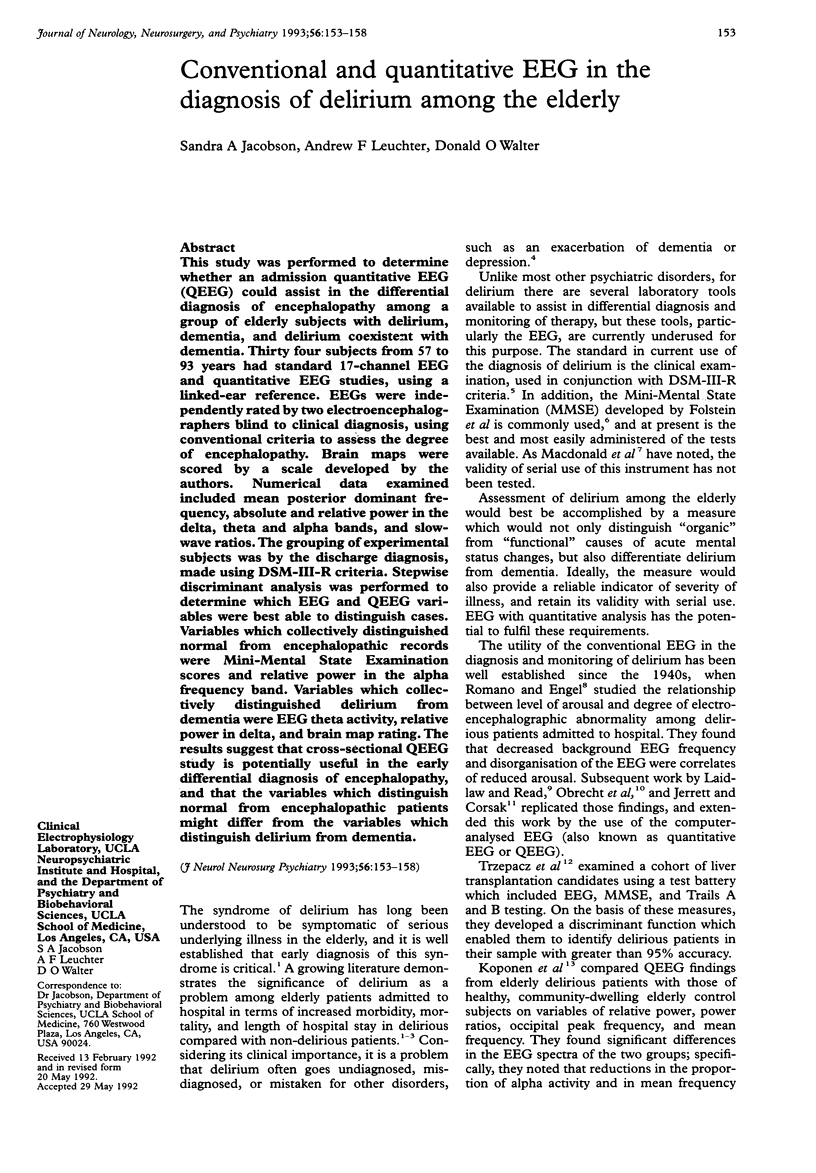
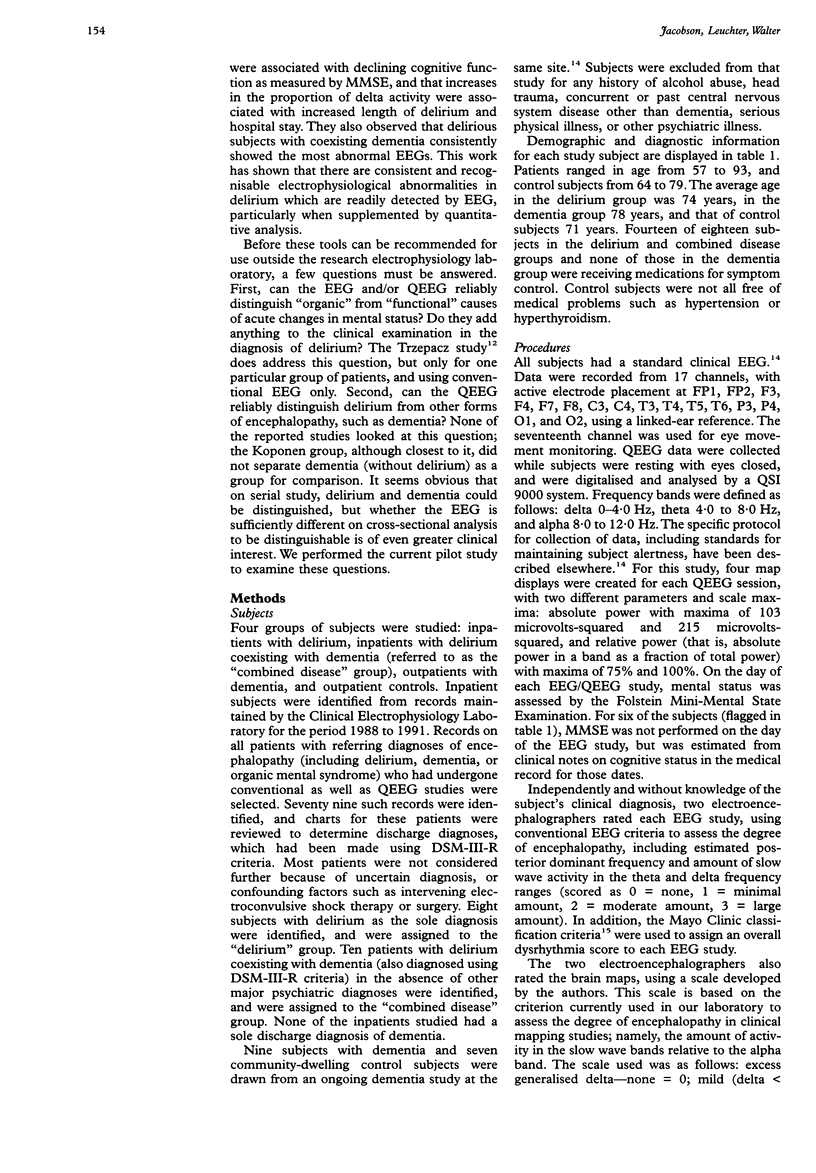
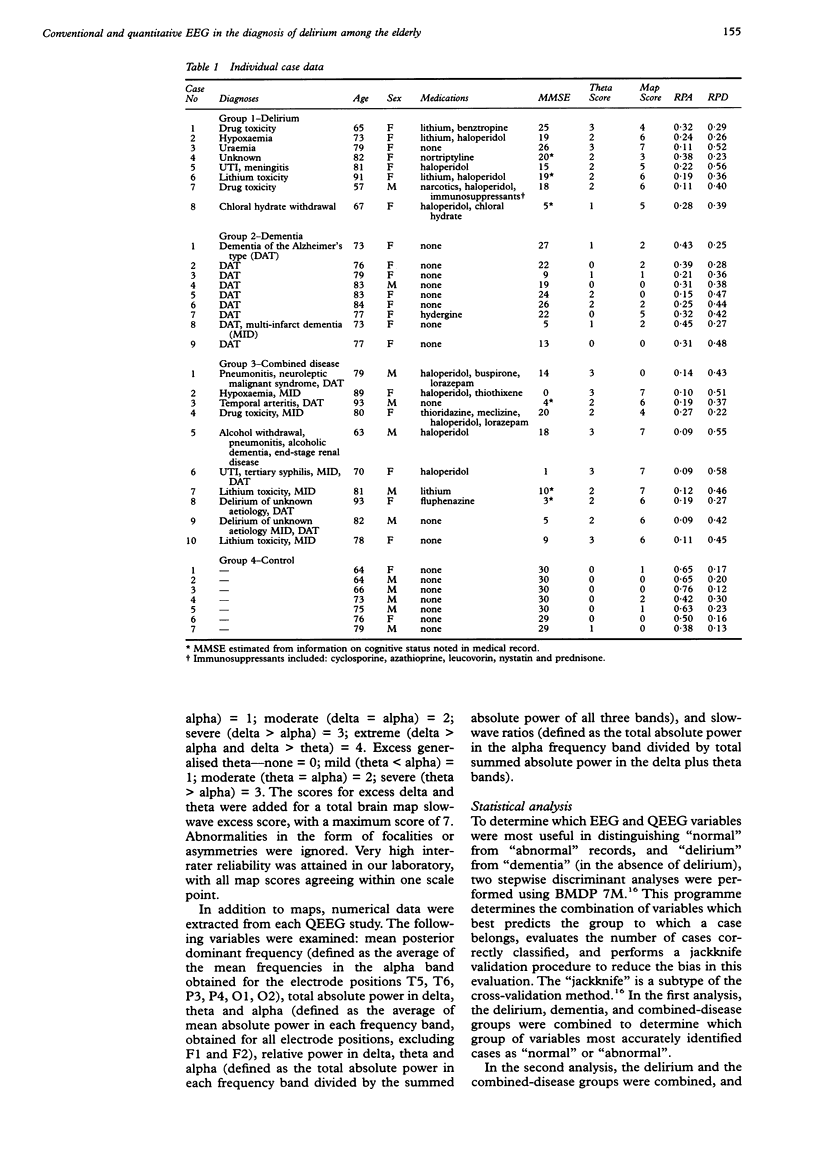
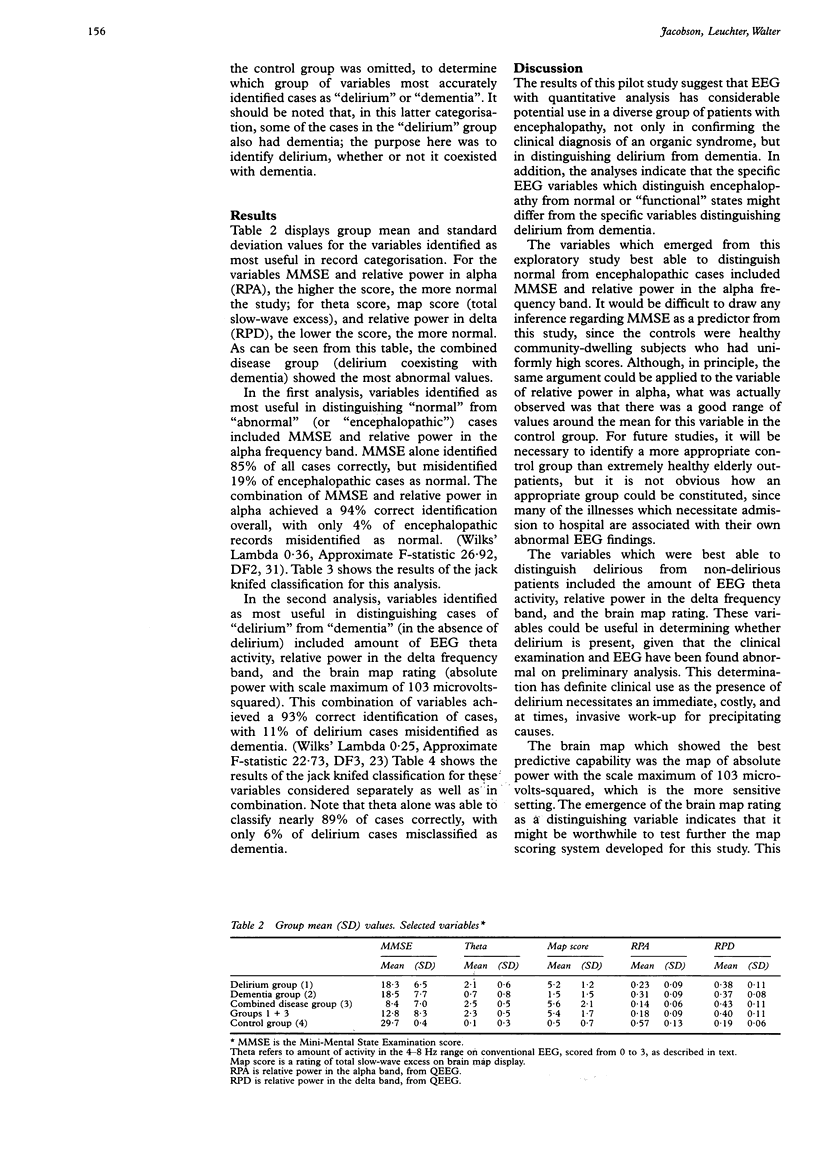
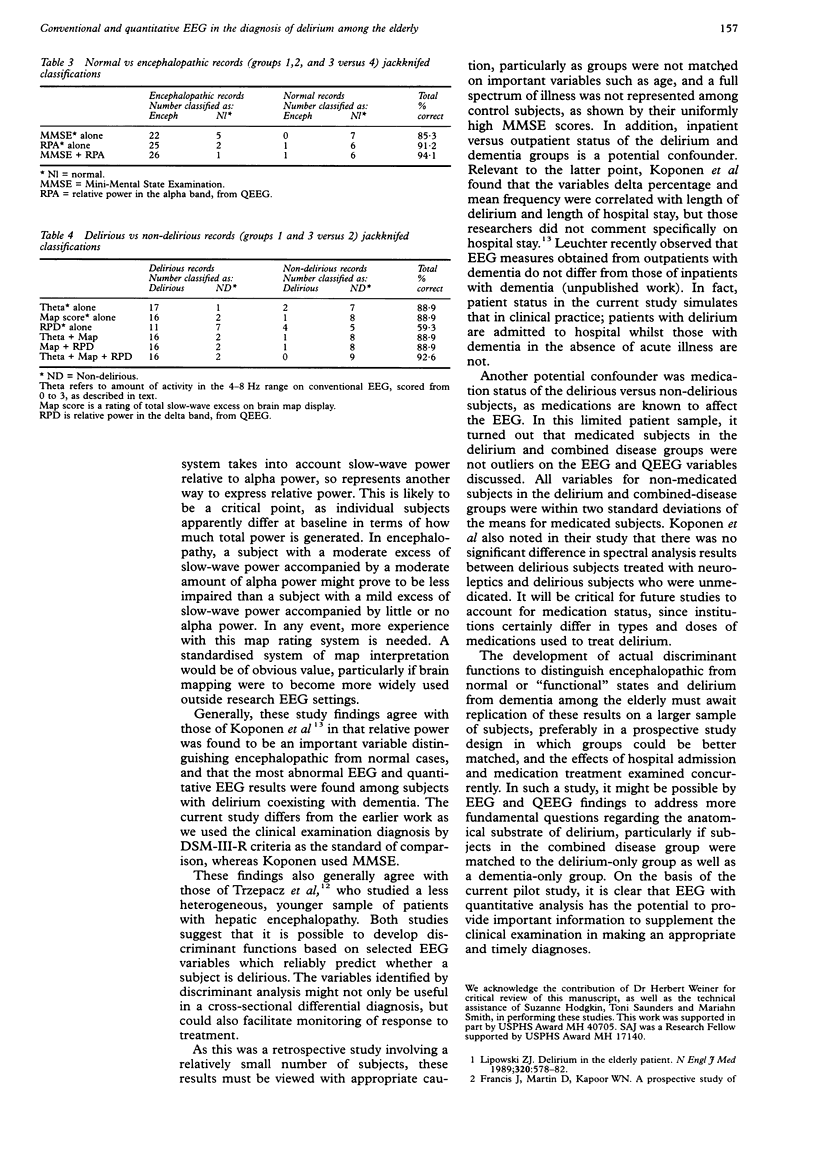
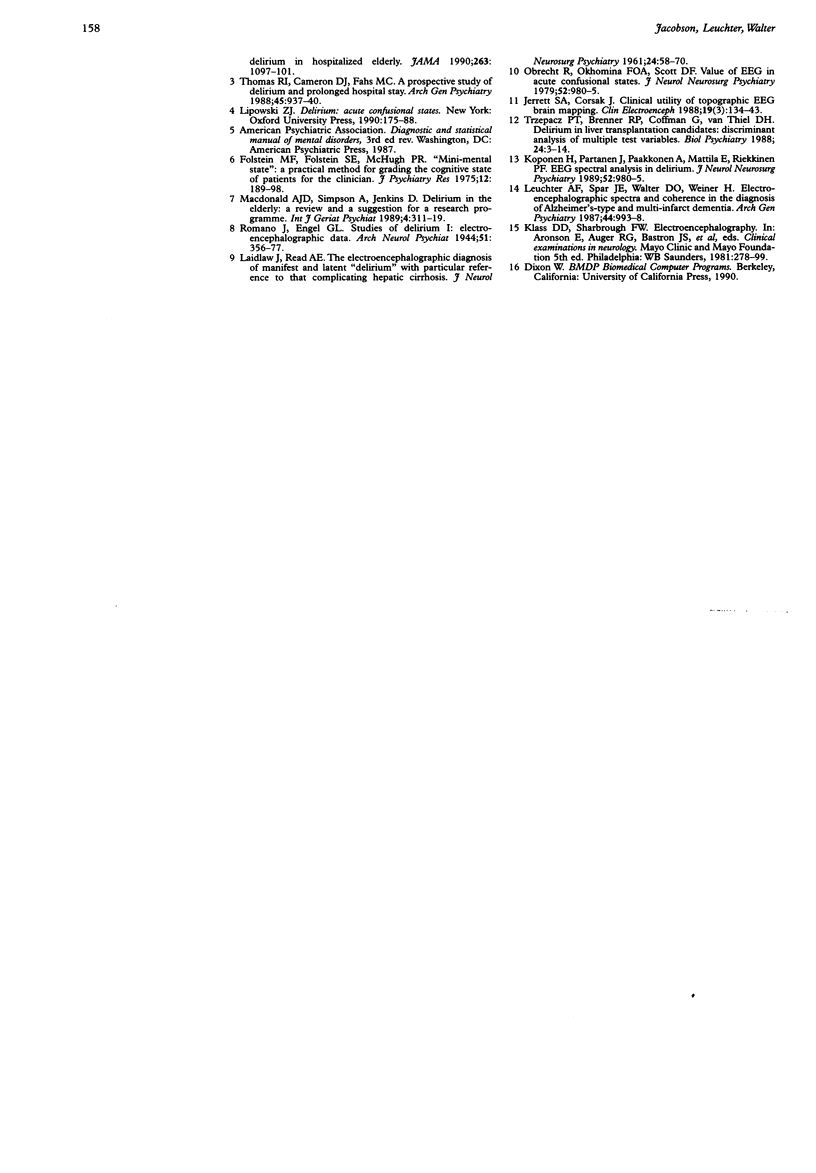
Selected References
These references are in PubMed. This may not be the complete list of references from this article.
- Folstein M. F., Folstein S. E., McHugh P. R. "Mini-mental state". A practical method for grading the cognitive state of patients for the clinician. J Psychiatr Res. 1975 Nov;12(3):189–198. doi: 10.1016/0022-3956(75)90026-6. [DOI] [PubMed] [Google Scholar]
- Francis J., Martin D., Kapoor W. N. A prospective study of delirium in hospitalized elderly. JAMA. 1990 Feb 23;263(8):1097–1101. [PubMed] [Google Scholar]
- Jerrett S. A., Corsak J. Clinical utility of topographic EEG brain mapping. Clin Electroencephalogr. 1988 Jul;19(3):134–143. doi: 10.1177/155005948801900307. [DOI] [PubMed] [Google Scholar]
- Koponen H., Partanen J., Päkkönen A., Mattila E., Riekkinen P. J. EEG spectral analysis in delirium. J Neurol Neurosurg Psychiatry. 1989 Aug;52(8):980–985. doi: 10.1136/jnnp.52.8.980. [DOI] [PMC free article] [PubMed] [Google Scholar]
- LAIDLAW J., READ A. E. The electroencephalographic diagnosis of manifest and latent 'delirium' with particular reference to that complicating hepatic cirrhosis. J Neurol Neurosurg Psychiatry. 1961 Feb;24:58–70. doi: 10.1136/jnnp.24.1.58. [DOI] [PMC free article] [PubMed] [Google Scholar]
- Leuchter A. F., Spar J. E., Walter D. O., Weiner H. Electroencephalographic spectra and coherence in the diagnosis of Alzheimer's-type and multi-infarct dementia. A pilot study. Arch Gen Psychiatry. 1987 Nov;44(11):993–998. doi: 10.1001/archpsyc.1987.01800230073012. [DOI] [PubMed] [Google Scholar]
- Lipowski Z. J. Delirium in the elderly patient. N Engl J Med. 1989 Mar 2;320(9):578–582. doi: 10.1056/NEJM198903023200907. [DOI] [PubMed] [Google Scholar]
- Thomas R. I., Cameron D. J., Fahs M. C. A prospective study of delirium and prolonged hospital stay. Exploratory study. Arch Gen Psychiatry. 1988 Oct;45(10):937–940. doi: 10.1001/archpsyc.1988.01800340065009. [DOI] [PubMed] [Google Scholar]
- Trzepacz P. T., Brenner R. P., Coffman G., van Thiel D. H. Delirium in liver transplantation candidates: discriminant analysis of multiple test variables. Biol Psychiatry. 1988 May;24(1):3–14. doi: 10.1016/0006-3223(88)90116-3. [DOI] [PubMed] [Google Scholar]


